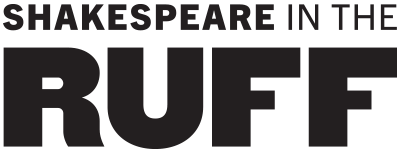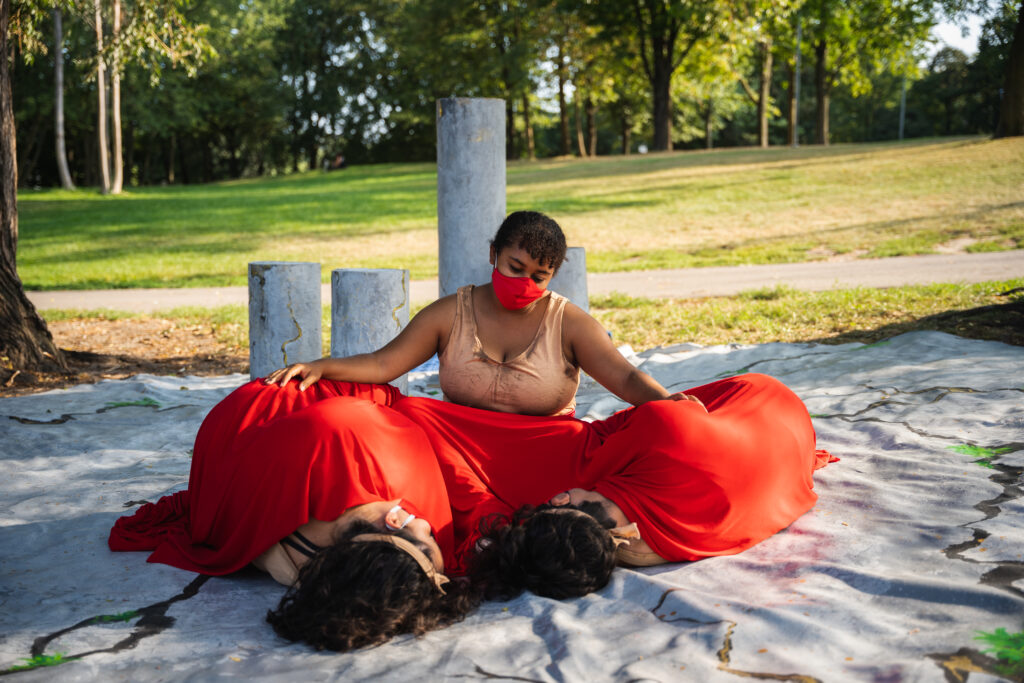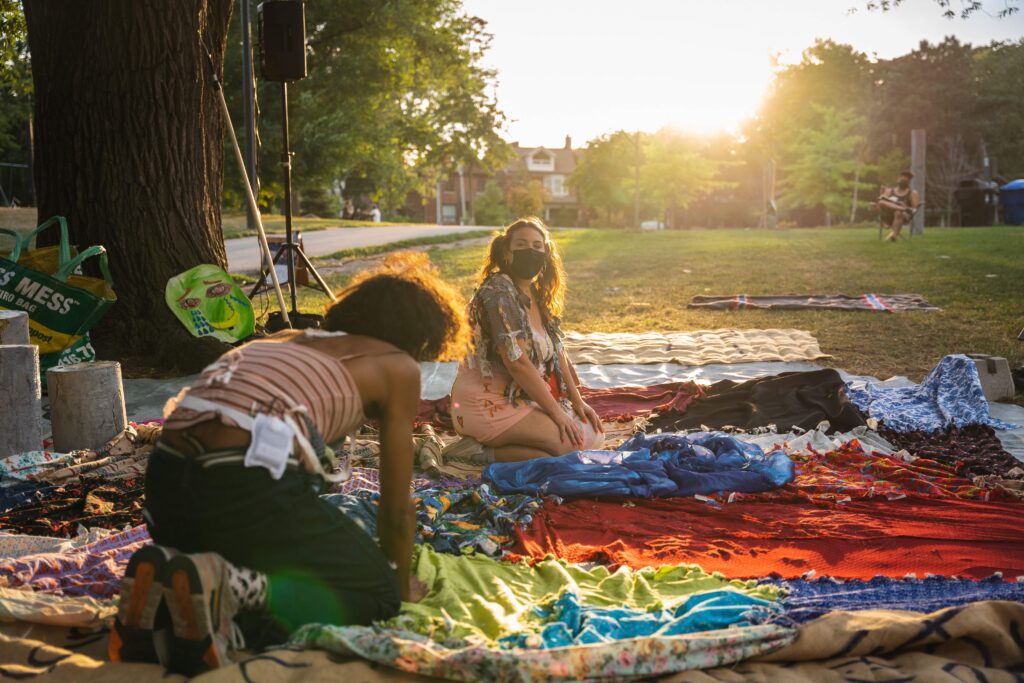
Jareth Li knows Ruff inside and out. Through his work as a set/lighting designer the last four years, Jareth brings theatrical magic to Withrow each summer, whether it’s lighting up the trees or creating an actor playground. We asked Jareth to share his thoughts on Towards Rebirth from a design perspective.
Three words to describe this show...
Raw. Irreverent. Joyful.
This is your fourth year with Ruff. What was different about this creative process, than say, your first Ruff experience (PJC) or a more traditional rehearsal/creation process?
There was SO much different about this year! First, I had come into the process as set designer, not in the lighting designer role I’m typically known for. To throw out an analogy, this allowed me to think about the shape of the house, rather than what colours I would paint it. One thing that changed for this year was the earlier show time, and a shorter length show. Without the cover of darkness to help us direct an audience towards the stage and “mask” the park, the natural light and sunset makes us embrace our natural environment even more.
Next, there was no script to start from! The approach to creating a set design for TR centred around giving our three different creation pods a cohesive playground for them to play on. When the process was pitched to me, I had to evaluate how to best respond to this particular process, which was essentially three weeks of workshop and writing, and one week of tech. Rather than traditional “preliminary” and “final” designs for a set, which would delivered before rehearsals even began, we made a choice to use the preliminary set design as a “prompt” for the actors to work within, refining that as the first passes at text and movement evolved. From there, it was all about responding to ideas and even offering ideas back to the creators. All in all, a much more organic process that allowed for an easier flow of ideation.
The final part of the process that was quite different from another process, is that the creators were responsible for any props that they wanted to use for their piece. They were allowed to play with and dress the space, and how they would make it look within their piece. There were a few landmarks provided, i.e. the stage needs to end up like this for the next group, but aside from that they were allowed to play with a lot of freedom.
What were some of the images you started with?
I started with a lot of visual references that were bouncing around in my brain from my experience of the pandemic. Last summer and fall, I’d taken to going on long, aimless strolls or bike rides around the empty city. In particular, I paid attention to places where there should be people and life. Streets, playgrounds, empty storefronts, etc. Amidst all of that, however, were little spots of something new – vegetation, wildlife. I also became a little obsessed with deconstructing found objects and DIY-ing them into new pieces of furniture, or something else. Creation from Destruction. I was also intrigued by the idea of how we come back from the pandemic; it would be a huge mistake to ignore the damage and scars that it wrought. That led me to the Japanese concept of Kintsugi; which is repairing broken objects, usually ceramics, with gold. All of this translated directly into the set – a worn “concrete” pad with grass growing through the cracks, and broken and cracked columns in the process of being repaired.
How do you think the pieces connect or don’t connect?
For me, all of the pieces involve a search of some kind. Whether it’s for freedom, escape, or connection, that search for something more is always there.
What were some of the images that appeared through the process?
The landmarks I alluded to earlier on came about as a response to the pieces as they were being created, and seeing how things progressed. I knew, for example, that I wanted the set to be “destroyed” in some fashion by Rupture, but I wasn’t sure when or how it would come together again, and how it would be used after. Sitting in on rehearsals, it became clear that it made sense in the arc of the show that it be rebuilt in the Resilience portion, rather than Rebirth. And again – so much goes to the creators and their visual imagery that they brought to the table. For example, all of Rebirth’s props, and how they used their fabric quilt.
Other things that came about in the process were “easter eggs”. I love putting small (sometimes not-so-small) details in my shows. Something that I was drawn to was how to embrace that this would, for a lot of folks, be their first live show in a very long time – on stage, in the audience, backstage., and to not take it so seriously. Some sharp-eyed audience members may have spotted some signs under the columns when they were knocked over that reference this fact.
What do you think Towards Rebirth is about?
I think that Towards Rebirth is about how people share an experience.
Anything else you’d like to share?
Shout out to my park squirrels. I hope that they have hidden away enough nuts for the winter. But in all seriousness, thank you to Eva and Kaitlyn for having me on as part of the team for the past few years. Withrow Park is basically my front yard, and it’s because of working in the park that I’ve actually met many of my neighbours. It wasn’t until this year that I truly understood how much Ruff is part of the neighbourhood community. Whenever we would be working in the park, painting, or rehearsing, someone would inevitably come up to us and ask when the show would be. So many folks had missed coming by last August to enjoy a show underneath the trees! Whether you saw it live, or catch the digital experience, I hope you join the next ten years of Ruff!
Jareth is a stage designer in Toronto, and he loves creating worlds in which others can play in. When he’s not designing, you can find him climbing, cooking, or on a wandering stroll/bike ride through the city.
Towards Rebirth is available for digital viewing until Oct. 31st, 2021. Register for tickets here.



